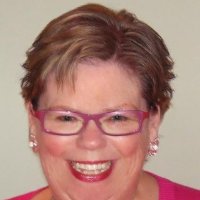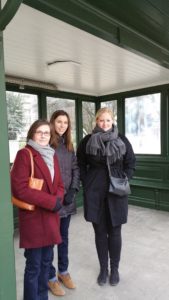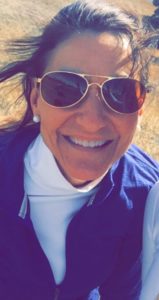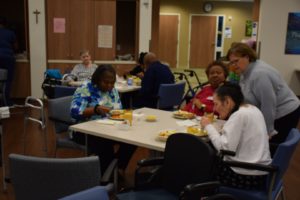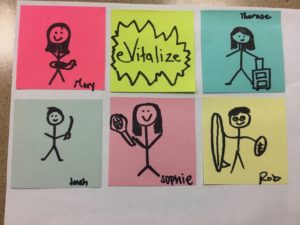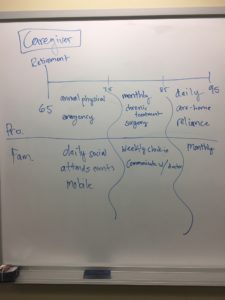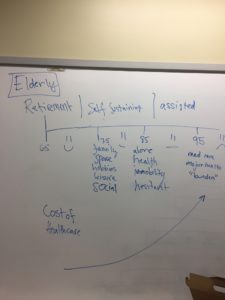Individual Interview #2 — Sophie Brown
Type: Individual Phone Interview
Date: 2/26/17
Subject: Walter Brown
For my second ethnographic interview, I spoke with my dad, Walter Brown. My mom and dad have very different opinions and habits concerning technology, so I knew that interviewing both of them would provide me with two extreme viewpoints from their demographic.
My dad is 57 years old, and lives in the San Francisco Bay Area with my mom. He is a lawyer, and has been working about 70 hours a week for the past 35 years. He loves his job and is not anticipating retiring anytime soon, but knows that it within the next 15 years or so, he will most likely retire. He travels, often internationally, a few times a month for work, and leads a very busy lifestyle. He is an avid user of technology in his professional and personal life. Both of his parents have passed away, so our conversation was mostly focused on his present use of technology, and his opinions about my maternal grandparents’ use of technology.
Personal Technology Use:
- What tech products do you use in your daily life, and how do you use them? My dad uses technology basically nonstop, at work and at home.
- “I use my phone all the time for e-mailing and texting. I e-mail my colleagues all the time, and will text my closer friends and family. I’ll also listen to music on my phone or check social media like Facebook and Instagram”
- “I have a desktop at work I use during the workday, and have a laptop I use when I travel or am working from home. I’ll occasionally use the desktop at home just to read the news or browse the Internet. Other than that, I watch TV at home and read books on my iPad”
- “I feel really comfortable with technology, and love finding out about new ways to use it. I get really excited when I hear about the newest, cutting-edge product, and I usually want it.”
- Do you currently monitor any health statistics, and how do you do it? He uses the Apple Health app to track his weight, and has this app linked to an app called “Lose It,” which requires you to enter everything you consume in order to track calories and nutrition.
- “I think this is a really useful process. The exercise of writing down your weight and intake forces you to be more cognizant and take better care of yourself.”
- “Using technology makes it super easy because you can use it no matter where you are. If I’m out at a restaurant, I can just pull out my phone and enter what I ate at lunch in a minute.”
- Do you think you’ll continue tracking your health as you get older? My dad said that he definitely will continue tracking his health as he gets older. Since is already in the habit of keeping track of his weight, using technology to track other aspects of his health does not seem like “that much of a stretch.”
- Takeaway: My dad loves technology and uses it in basically every aspect of his life. He is currently tracking his weight with apps on his iPhone and is willing to continue tracking other aspects of his health as he gets older. He doesn’t find this process much of a hassle and thinks that using technology is really beneficial in his life.
My Grandparents/His Parents:
- In your opinion, how comfortable are my grandparents using technology?
- “Your grandpa basically doesn’t do anything with technology. I would say that your grandma is basically ahead of the curve.”
- “I think it has something to do with the fact that they’re 10 years apart in age. I think the ability of a 70-year-old to adopt new technology is pretty different than an 80-year-old.”
- Your dad passed away in 2009, which is basically a different era in tech compared to where we are now. So many things have changed in the world of technology since then, but how tech-savvy would you say he was in the last few years of his life?
- “He was not really into technology it at all, and I think that has to do with the fact that he was pretty old by the time most modern technology became really popular. By the time the Internet was pretty mainstream, so in the mid-90s, he was already 81 years old.”
- “I think a person’s willingness to adopt and implement technology has to do with whether they had to use tech during their working lives. Most people in their eighties never had to use most modern forms of technology in their jobs, so they were never forced to pick it up.
- “Since I’ve had to use technology in my job, I was basically forced to learn how to use everything. Mom also stopped working when you were born, so she never really had to learn how to use modern computers or anything.”
- Takeaway: My dad made a really good point about senior citizens’ willingness and ability to adopt new technology. He thinks that the amount someone has used technology in their professional lives will determine how comfortable they are using new products and implementing technology into their lives. This definitely corresponds with the difference in my mom and dad’s level of comfort with technology, because my dad has had to use technology throughout his ongoing career, and my mom basically stopped being force to use and learn new technology 20 years ago.
After our conversation, I used the 5E framework to examine how customers like my dad would react to an IoT product used to track their health.
Entice
The idea of new technology alone is definitely enticing to my dad, and it does not take much to convince him that a new product is worth his time and money. He already enjoys tracking his health so a product that promises an easy tracking system would definitely entice him.
Enter
He would “enter” the product experience by setting up and getting used to the product. I feel pretty confident that he would have no trouble getting accustomed to a new device, and would be able to figure out the new technology pretty quickly.
Engage
My dad is already pretty good at staying engaged with technology, and keeping up with a tracking system that requires him to provide input multiple times a day. I feel confident that he would be able to stay engaged with a product that tracks his health.
Extend
Again, I removed the “Exit” step in the framework. Ideally, our product would become an integral part of our customer’s daily routine as he or she moves through every stage of life. My dad also expressed willingness to continue tracking his health as he grows older, so chances are high that consumers like him will definitely extend their usage of this product.
